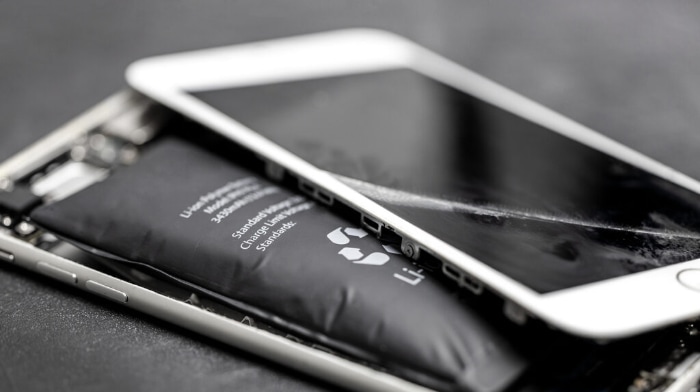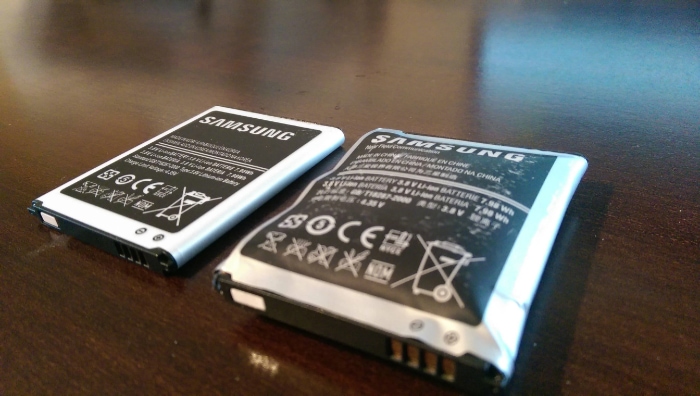Exploring the Causes of Lithium Battery Swelling

Lithium batteries have become an essential of modern technology, powering everything from smartphones to electric vehicles. Yet, amidst their widespread adoption lies a lesser-known issue that can affect their performance and safety: swelling.
This phenomenon, where batteries bloat and deform, raises concerns not just for device functionality but also for user safety.
Basic Composition of Lithium Batteries
Lithium batteries are integral to modern technology, offering high efficiency and capacity. These batteries power a diverse array of devices, from mobile phones to electric vehicles.
Understanding their composition is crucial to comprehending why they can experience swelling. The structure of a lithium battery consists of several essential components, each playing a vital role in its operation.
Anode and Cathode
The anode and cathode are the primary electrodes in a lithium battery. Typically, the anode is made from graphite, while the cathode is composed of a lithium metal oxide.
These electrodes are critical for the movement of lithium ions during the battery’s charge and discharge cycles.
Electrolyte
The electrolyte in a lithium battery is a chemical medium that allows the flow of lithium ions between the anode and cathode. It usually consists of lithium salts mixed in organic solvents.
The electrolyte’s composition and quality are key factors in the battery’s performance and safety.
Separator
The separator in a lithium battery serves a dual purpose. It acts as a physical barrier, preventing direct electrical contact between the anode and cathode, and it allows lithium ions to pass through.
This component is essential for preventing short circuits within the battery.
Battery Operation and Energy Storage
In lithium batteries, energy storage and release occur through the movement of lithium ions between the anode and cathode. During charging, ions move from the cathode to the anode, storing energy.
During discharge, these ions travel back to the cathode, releasing energy for the device’s use. This process is central to the battery’s functionality and influences factors like capacity, lifespan, and efficiency.
Understanding these basic components and their interactions is foundational in exploring the causes of lithium battery swelling, a phenomenon resulting from complex chemical and physical processes within the battery.
Mechanisms Leading to Swelling
Swelling in lithium batteries is a significant concern, often leading to reduced functionality and potential safety hazards. This swelling can be attributed to various internal mechanisms and chemical processes.
A thorough understanding of these mechanisms is crucial for both consumers and manufacturers, as it aids in the development of safer and more reliable batteries.
Electrochemical Processes
The core function of a lithium battery involves complex electrochemical reactions. During these reactions, lithium ions move between the anode and cathode.
Occasionally, these reactions can go awry, leading to the formation of gases or other byproducts within the battery. These unintended reactions, often exacerbated by factors like overcharging or manufacturing defects, can cause the battery to swell as internal pressure builds up.
Thermal Expansion
Thermal expansion is another critical factor contributing to battery swelling. All materials, including those in batteries, tend to expand when heated.
This expansion can be problematic in lithium batteries, where tightly packed components have limited space to expand. Excessive heat, often generated during rapid charging or discharging, can lead to the expansion of internal components and, consequently, the battery casing.
Gas Generation
Gas generation within lithium batteries is a significant cause of swelling. This phenomenon typically occurs due to electrolyte decomposition or the breakdown of other internal materials.
When the battery’s internal environment is destabilized—either through damage, overcharging, or exposure to extreme temperatures—chemical reactions can produce gases. These gases accumulate inside the battery, leading to swelling and, in severe cases, rupture.
Stress on Battery Components
Finally, mechanical stress on battery components can contribute to swelling. This stress can result from physical damage, such as drops or impacts, or from manufacturing defects that compromise the battery’s structural integrity.
Such stress can lead to internal short circuits or the breakdown of materials, both of which can cause swelling.
External Factors Contributing to Swelling

While internal mechanisms play a significant role in lithium battery swelling, external factors also contribute markedly to this issue. These external influences can exacerbate internal conditions or directly cause changes that lead to swelling.
Overcharging
One of the most common external factors leading to battery swelling is overcharging. When a lithium battery is charged beyond its capacity, it can lead to excessive lithium-ion accumulation at the anode.
This accumulation can cause physical expansion of the anode material and generate heat, both of which contribute to swelling. Moreover, overcharging can also lead to electrolyte decomposition, further exacerbating the swelling issue.
Physical Damage
Physical damage, such as drops, impacts, or punctures, can also lead to battery swelling. Such damage can disrupt the internal structure of the battery, leading to short circuits or the breakdown of internal barriers like the separator.
This disruption can result in uncontrolled chemical reactions and the generation of gases, which in turn causes the battery to swell.
Environmental Stress
Environmental stress, including exposure to high temperatures or extreme cold, can significantly impact lithium batteries. High temperatures can accelerate chemical reactions within the battery, leading to gas generation and swelling.
Conversely, extremely low temperatures can affect the battery’s internal resistance and chemistry, potentially leading to similar swelling issues.
Inadequate Charging Practices
Inadequate charging practices, such as using an incompatible charger or frequently charging the battery to its maximum capacity, can also contribute to swelling. These practices can strain the battery’s internal chemistry, leading to heat generation and the breakdown of components, eventually causing the battery to swell.
Manufacturing Defects
Although not directly related to the user’s actions, manufacturing defects can play a role in battery swelling. Defects in the battery’s design, materials, or assembly process can make it more susceptible to swelling.
These defects might not be immediately apparent but can manifest over time as the battery is subjected to regular use and charging cycles.
The Risks of Swollen Batteries
Swollen batteries are more than just a nuisance; they pose significant risks to both the device and its user. Understanding these risks is crucial for ensuring safety and preventing potential hazards.
Swelling can compromise the structural integrity of the battery, leading to a range of issues from diminished performance to severe safety incidents.
Safety Concerns
The primary risk associated with swollen batteries is the potential for leakage or rupture. As the battery swells, it can cause the casing to crack or break open, leading to the release of toxic and corrosive chemicals.
These substances can damage the device and pose health risks if they come into contact with skin or are inhaled. In severe cases, a swollen battery can also lead to fire or explosion, especially if the internal short circuiting occurs as a result of the swelling.
Device Damage
Swollen batteries can cause significant damage to the devices they power. As the battery expands, it can warp or displace other components within the device, potentially leading to irreparable damage.
In portable devices like smartphones or laptops, a swollen battery can cause the casing to bulge, impairing aesthetics and functionality. This damage not only affects the device’s performance but also leads to costly repairs or replacements.
Performance Degradation
Beyond physical damage, swollen batteries often suffer from reduced efficiency and capacity. The swelling can disrupt the internal structure of the battery, impairing its ability to hold a charge and deliver power effectively.
This degradation leads to shorter battery life and diminished performance of the device, requiring more frequent charging and reducing overall convenience.
Environmental Impact
Swollen batteries also pose environmental concerns. If not disposed of properly, the chemicals and materials within a swollen battery can harm the environment.
They can contaminate soil and water, posing risks to wildlife and ecosystems. Additionally, the improper disposal of such batteries contributes to the growing problem of electronic waste.
User Inconvenience
Finally, swollen batteries cause significant inconvenience to users. They necessitate repairs, replacements, and often result in data loss if the device becomes inoperable.
The unreliability of a device with a swollen battery can disrupt daily activities, especially if the device is essential for work or communication.
Conclusion
Swollen lithium batteries are more than just a technical issue; they’re a matter of safety and efficiency. This article has taken you through the inner workings of lithium batteries, the reasons behind their swelling, and the risks associated with this phenomenon.
We’ve seen that swelling can be triggered by both internal processes, like chemical reactions and thermal expansion, and external factors, including overcharging and environmental stress. The consequences range from device damage to serious safety hazards, emphasizing the importance of proper battery care.
Being aware of the signs of battery swelling and understanding how to prevent it are key steps in ensuring the longevity and safe operation of your devices. Whether you’re a tech enthusiast or just a regular user of modern gadgets, the insights provided here can help you make informed decisions about using and maintaining your lithium battery-powered devices.
Remember, treating your batteries with care is not just about preserving your device; it’s about safeguarding your own well-being and that of the environment.



